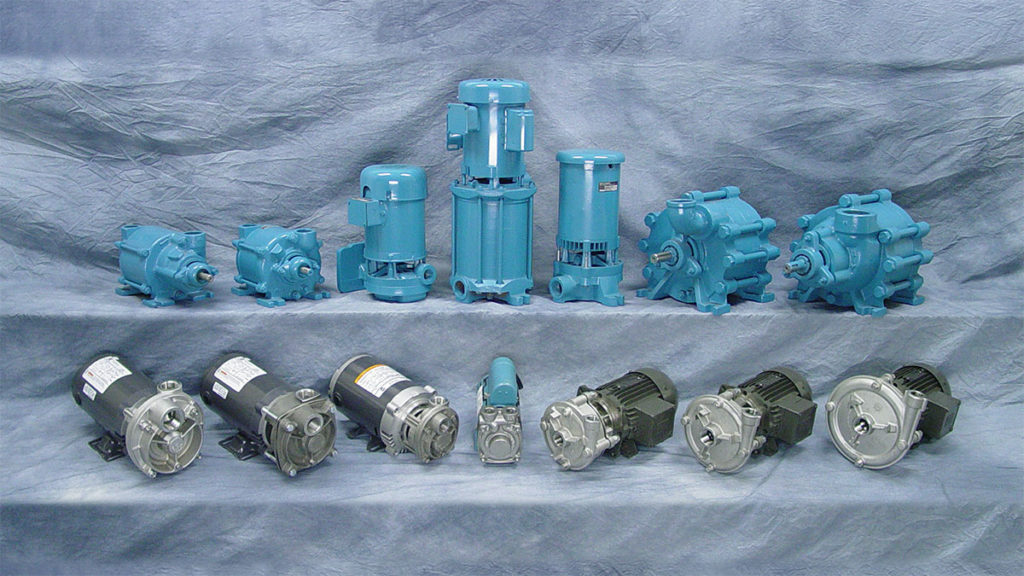Welcome to Week 5 of our ongoing series on regenerative turbine pumps. This week, we dive into one of the most innovative and performance-enhancing features of these pumps: the free-floating balanced impeller design. This unique aspect of MTH Pumps’ regenerative turbine pumps offers significant advantages in terms of durability, reliability, and overall performance.
Common Challenges with Fixed Impeller Designs
In many traditional pump designs—such as centrifugal, positive displacement, or even some other turbine-style pumps—the impeller is fixed in place using bolts, set screws, or is threaded directly onto the shaft. While this rigid attachment may seem like a sturdy solution, it comes with a set of challenges:
- Axial Thrust Issues: Fixed impellers are subject to forces that can cause axial thrust, which can push the impeller toward the motor or the casing. Over time, this can lead to wear and tear on the impeller, motor bearings, and seals. Axial thrust often leads to performance degradation and can shorten the lifespan of the pump.
- Difficulty in Rebuilding: Some manufacturers use a press fit to hold the impeller in place, making it extremely difficult to disassemble and rebuild the pump. This not only increases maintenance costs but can also result in longer downtime when repairs are needed.
- Sensitivity to Pressure and Temperature Variations: Pumps operating in environments with varying pressures or temperatures can suffer from misalignment or warping of the impeller if it is rigidly fixed. This can lead to performance inefficiencies and increase the likelihood of component failure.

The Free Floating Balanced Impeller Design
MTH Pumps solves these challenges with its free-floating balanced impeller design. Unlike traditional impeller setups, MTH’s regenerative turbine pumps feature an impeller that is not rigidly fixed to the shaft. Instead, it is “free-floating” between the casing and the motor bracket, allowing it to self-adjust as needed during operation.
This unique design offers several key benefits:
- Self-Adjustment for Optimal Alignment: The free-floating impeller is allowed to self-adjust to the ideal position while the pump is in operation. This automatic adjustment reduces the likelihood of axial thrust, as the impeller is not rigidly held in place and can naturally balance itself. The result is smoother operation and less wear on the pump components.
- Adaptation to Pressure and Temperature Changes: In applications where fluid pressure or temperature may fluctuate, a free-floating impeller can adjust to these changes without becoming misaligned or causing damage. This flexibility is especially important in industrial settings where sudden changes in fluid conditions are common.
- Reduced Wear and Tear: By eliminating the fixed points of contact found in traditional impeller designs, the free-floating impeller reduces the amount of stress placed on the pump’s internal components. This leads to less wear and tear on parts such as bearings, seals, and the impeller itself, which ultimately extends the overall lifespan of the pump.
- Simplified Maintenance: The free-floating design also simplifies the rebuilding process. Because the impeller is not tightly fixed, disassembly is easier and faster, leading to reduced downtime during maintenance or repair. This design saves both time and money, making MTH’s regenerative turbine pumps a cost-effective choice in the long run.
Applications that Benefit from Free Floating Impeller Designs
This free-floating impeller design is particularly valuable in applications where the pump is subject to variable operating conditions. Here are a few examples of industries and processes that benefit most from this feature:
- Chemical Processing: In chemical plants, fluid temperatures and pressures often fluctuate as materials move through different stages of production. The ability of the impeller to adjust on-the-fly helps maintain consistent pump performance, even in challenging conditions.
- Water Treatment: Many water treatment facilities experience variations in pressure as systems start and stop throughout the day. The free-floating impeller’s ability to adapt to these changing conditions ensures that flow rates and pressures remain consistent, improving overall process efficiency.
- HVAC Systems: In HVAC systems, changes in demand can cause fluctuations in both temperature and pressure. The free-floating impeller in a regenerative turbine pump helps maintain smooth operation, regardless of these variations, ensuring reliable performance in heating and cooling applications.
- Marine Applications: Marine systems often experience variations in pressure due to changes in water temperature and salinity. The adaptability of a free-floating impeller ensures that marine pumps continue to perform optimally in these fluctuating environments, without the need for frequent adjustments or maintenance.
Why MTH Pumps Uses Free Floating Balanced Impellers
At MTH Pumps, we believe that advanced design features like the free-floating impeller contribute to superior pump performance and longevity. By addressing common challenges faced by other pump designs—such as axial thrust, wear and tear, and maintenance difficulties—our regenerative turbine pumps are able to offer more reliable operation, longer service life, and lower total cost of ownership.
Thank you for joining us for Week 5 of our series. Be sure to tune in next week as we explore another crucial feature of regenerative turbine pumps: their good NPSH (Net Positive Suction Head) characteristics, and why this matters for your application.

